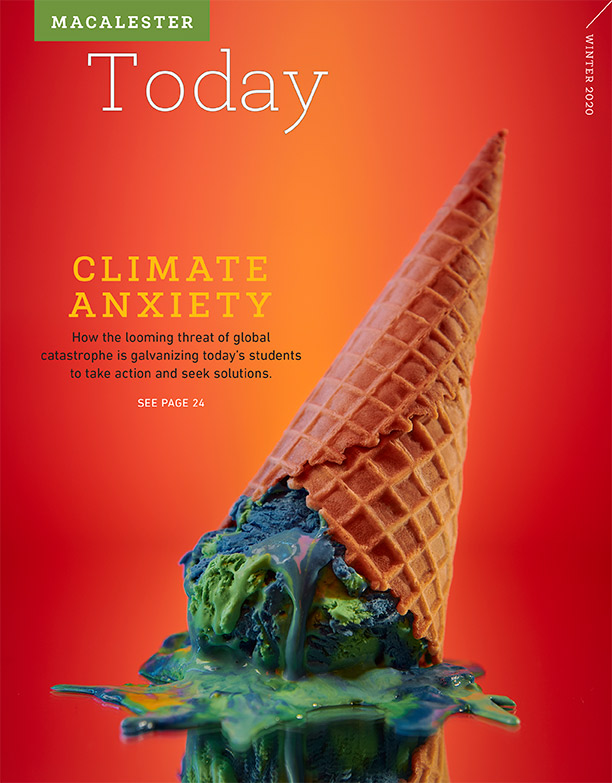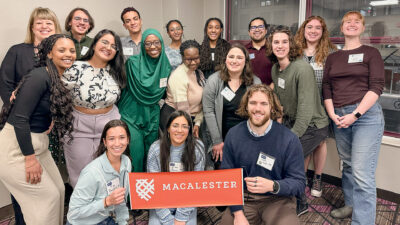
In Macalester’s media and cultural studies program, Michael Griffin teaches courses on the history and analysis of film and photography, media representation, media institutions, and community media. We asked him about how news has changed in the twenty-first century—and what that means for media consumers today.
What was happening in newspapers 20 years ago?
In the early 2000s, newspapers weren’t experiencing a significant readership drop-off yet, but they were starting to lose advertising money. Before the rise of the web, if you lived in Minneapolis and you were looking for a used car, you’d go to the Star Tribune classifieds section, the paper’s single biggest revenue source prior to the 2000s. When the web became more accessible, sites like Craigslist or Cars.com were more efficient resources. Who would still pore over the classifieds when you could just do a quick search online?
That was the first really serious blow to the traditional news media. When their ad and classified revenues dropped, the only recourse in their view at the time was to cut costs. By 2005, this was leading to newsroom layoffs. Newspapers became smaller, with fewer printed pages and less content. And then, not surprisingly, people weren’t as interested in subscribing. A death spiral for newspapers began to develop even before the great recession hit.
What’s changed in our news consumption?
We’re getting more of our news online at the same time that the reliability of online information is increasingly suspect. When someone sends me a story on Facebook or Twitter, the first thing I look for is the source of the report. If the source is unfamiliar or unclear, then red flags go up for me right away.
The web, because it is algorithmic, directs us to sites and information that mimic our previous patterns of internet activity. Hyperlinked material tracks with our predispositions and therefore most often leads to content that resonates with our preexisting worldview. The sheer volume of information being passed along in these online echo chambers has accelerated, and political forces are taking advantage of this to spread rhetoric that in a previous era we would have called propaganda. Political influencers—sometimes using automated bots—are able to control news agendas in ways that would have been unheard of in the past. Governments have tried to shape news agendas in the past by strategically releasing information and controlling their interactions with the press. But in such interactions government officials were often subject to interrogation and pushback from reporters.
What’s different now?
President Trump can shape the news agenda by what he decides to tweet in the morning. He doesn’t have to speak with anyone or take any questions. The media are forced to reflect and respond to that content, even when trying to debunk it. Many observers think President Trump has been brilliant about taking advantage of this environment.
Also, reputable media are continually under attack by political daily assault: “You can’t believe the liberal media,” “It’s all fake news.”
What signs of hope do you see?
Slowly but surely, the idea of paying for quality news online has gained greater acceptance. Five years ago, everybody thought web content should be free. Then certain publications realized that survival demanded a paywall—so they put one up and hoped for the best.
And that’s worked out really well for publications like The New York Times, The Washington Post, The New Yorker, and even regional newspapers like the Star Tribune. Adopting paywalls stabilized revenues during the crisis period following the recession. News organizations discovered that many people are willing to pay for reliable, higher-quality content.
Today, I don’t think we have to fear that The New York Times or National Public Radio is going to disappear anytime soon. And online news organizations like Vox and Politico have also started to prove their value. There have been enough success stories that there’s a foundation for future development.
Where are news organizations struggling?
They’re struggling with how to responsibly navigate the interactive social media world. They have to distinguish their work online as professionally produced reporting—in contrast to sponsored content, strategic political communication, or social media commentary. Reporters now use Twitter to publicize their own articles and respond to other news, and news organizations have to monitor their own fact-checked content as it is shared and commented on in social media.
This is an environment that myriad online entities (including bots) exploit regularly. News sites have had to devise strategies to contend with trolling in their comments sections, and with attempts via social media to challenge, undercut, and even alter their content in linked messages and memes. And news consumers must resist clickbait: The most reliable news sources are deliberately accessed by users, and are not in the business of snaring casual web surfers. That’s one dimension that separates reputable news organizations from news businesses whose primary purpose is to attract attention and revenue even at the cost of news standards.
How can a news consumer support journalism?
Identify reliable, trustworthy sources—and then support those organizations. Subscribe or donate money if you can. If you don’t have resources to donate, continue to support them with your readership or clicks. No news organizations are perfect; reporting should always be critiqued, but we should support outlets that adhere to a transparent set of standards. You should know who owns the organization, what their mission is, how they do their work, and how to hold them accountable. Help those sources keep doing what they’re doing.
By Rebecca DeJarlais Ortiz ’06 / Illustration by Benjamin Currie
January 21 2020
Back to top





